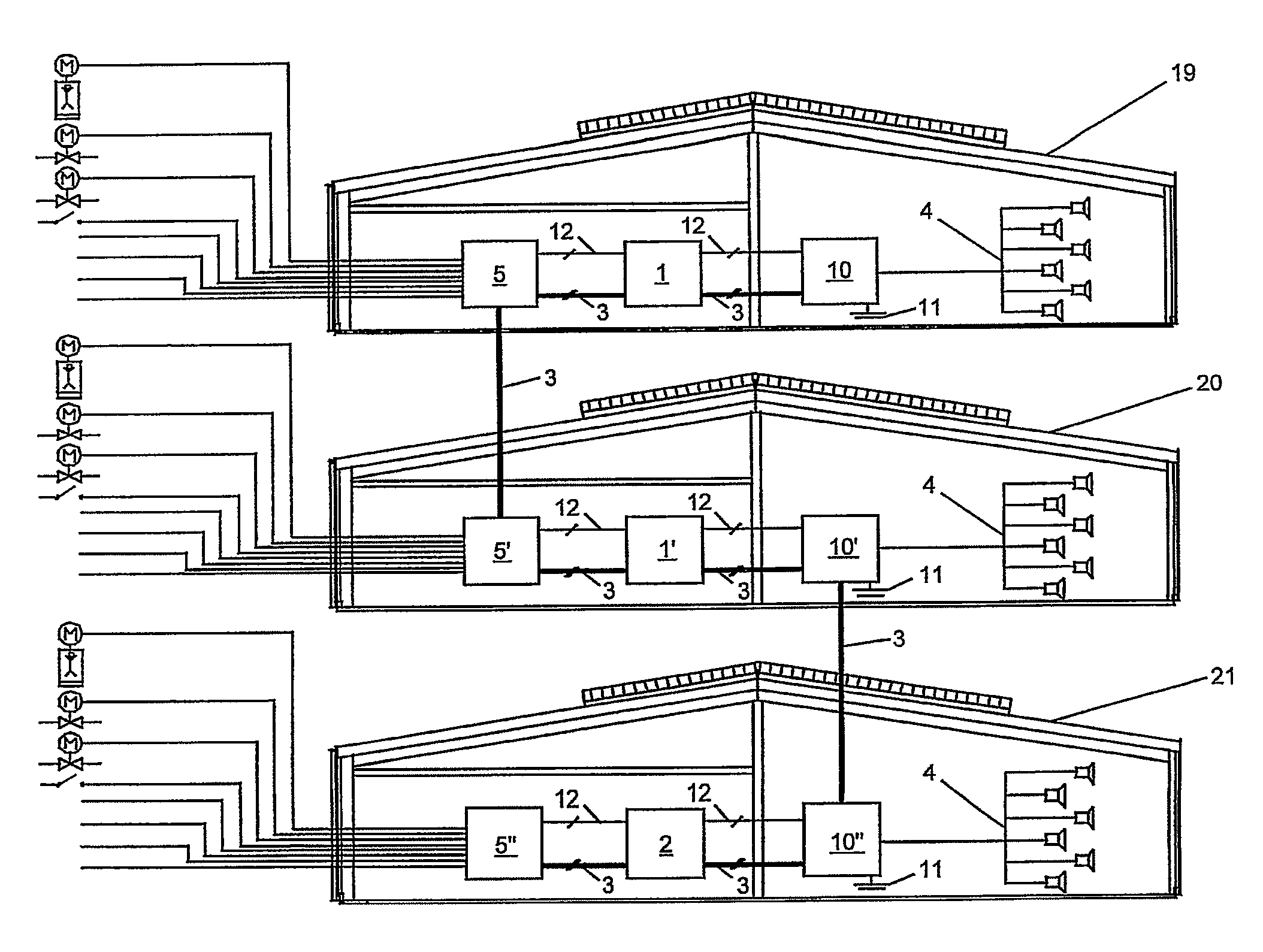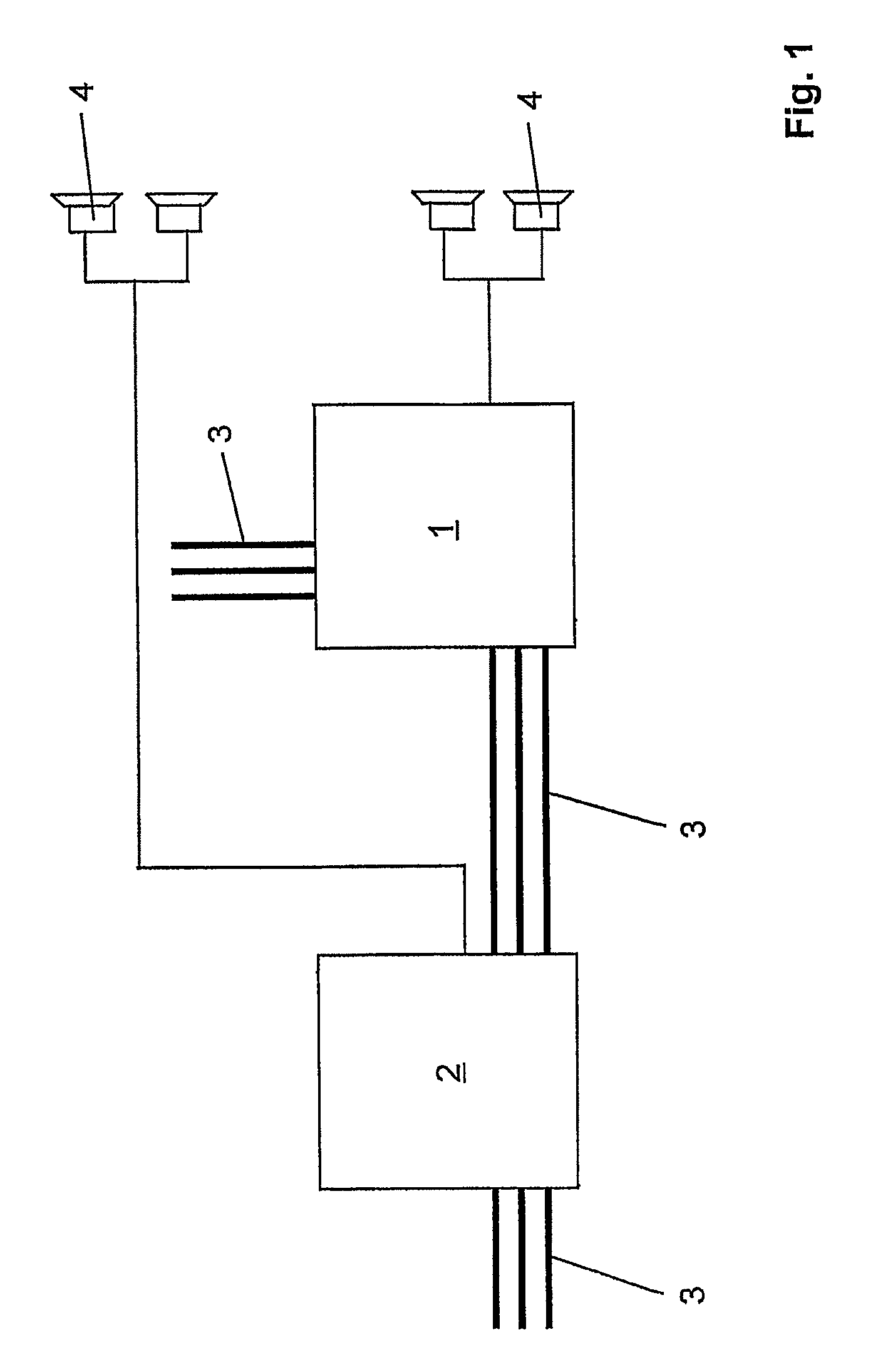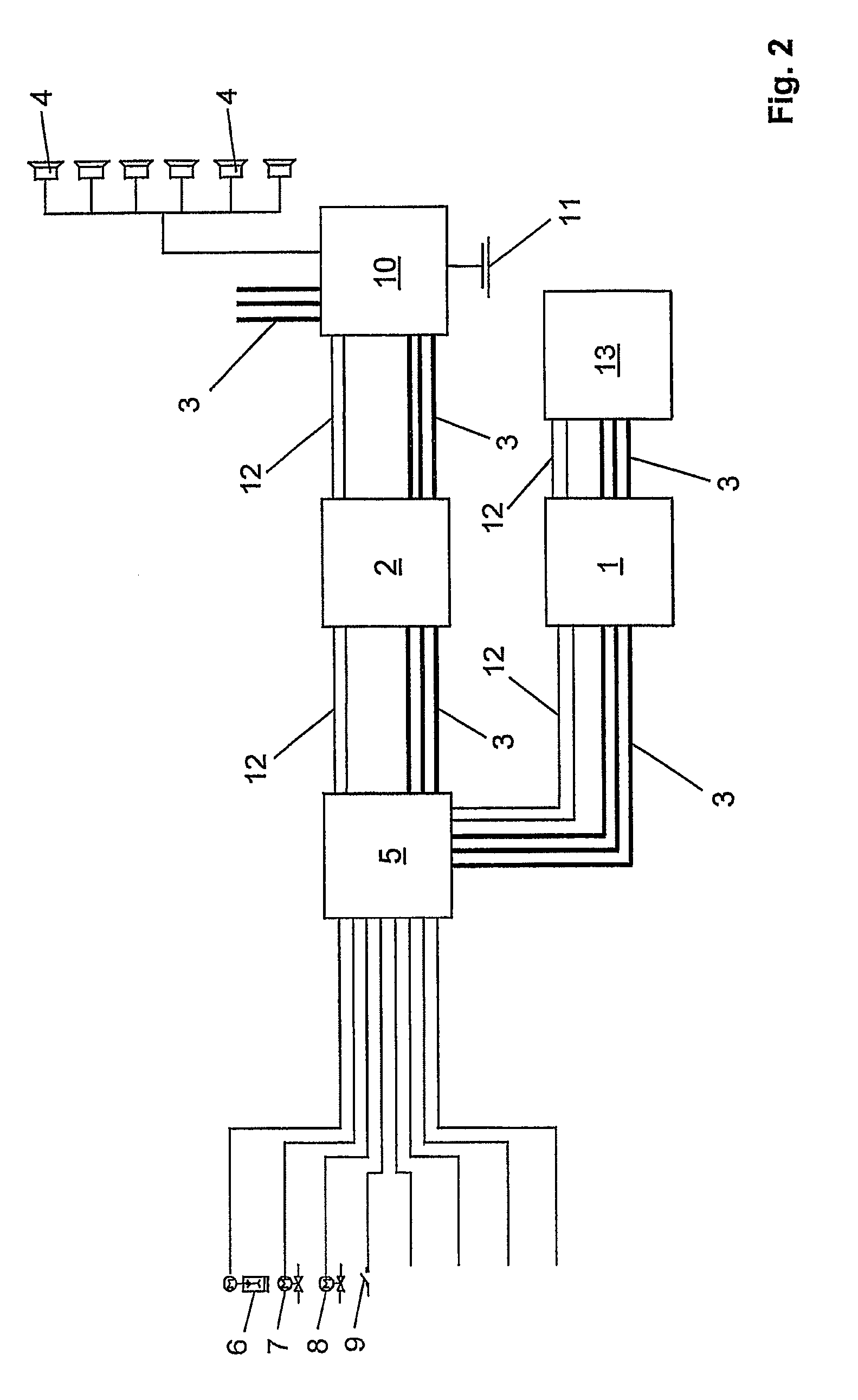Seismic warning system
a seismic warning and earthquake technology, applied in seismology, geological measurement, horology, etc., can solve the problems of complete lack of acceptance of the system and the alarm system would not be taken seriously, and achieve the effect of expanding and scaling, improving safety, and reliable functioning
- Summary
- Abstract
- Description
- Claims
- Application Information
AI Technical Summary
Benefits of technology
Problems solved by technology
Method used
Image
Examples
Embodiment Construction
[0030]The earthquake alert system shown in FIG. 1 consists of two detection units 1 and 2, which each have a tremor sensor not shown in the figure, as well as signal processing means, also not shown in the figure, for processing and analyzing the signals of the tremor sensor. The detection units 1 and 2 are connected with one another by way of a data bus 3. Sirens 4 as acoustical alarms are connected with each of the detection units 1 and 2. The signal processing means of the detection units 1 and 2 are set up in such a manner that they detect primary waves of earthquakes on the basis of the signals of the tremor sensors, in each instance. The detection units 1 and 2 communicate with one another in master / slave mode, by way of the data bus 3. In this connection, the detection unit 2, which is being operated in master mode, periodically queries the detection unit 1, which is being operated in slave mode. In this way, the detection unit 2, which is being operated in master mode, recei...
PUM
 Login to View More
Login to View More Abstract
Description
Claims
Application Information
 Login to View More
Login to View More - R&D
- Intellectual Property
- Life Sciences
- Materials
- Tech Scout
- Unparalleled Data Quality
- Higher Quality Content
- 60% Fewer Hallucinations
Browse by: Latest US Patents, China's latest patents, Technical Efficacy Thesaurus, Application Domain, Technology Topic, Popular Technical Reports.
© 2025 PatSnap. All rights reserved.Legal|Privacy policy|Modern Slavery Act Transparency Statement|Sitemap|About US| Contact US: help@patsnap.com



